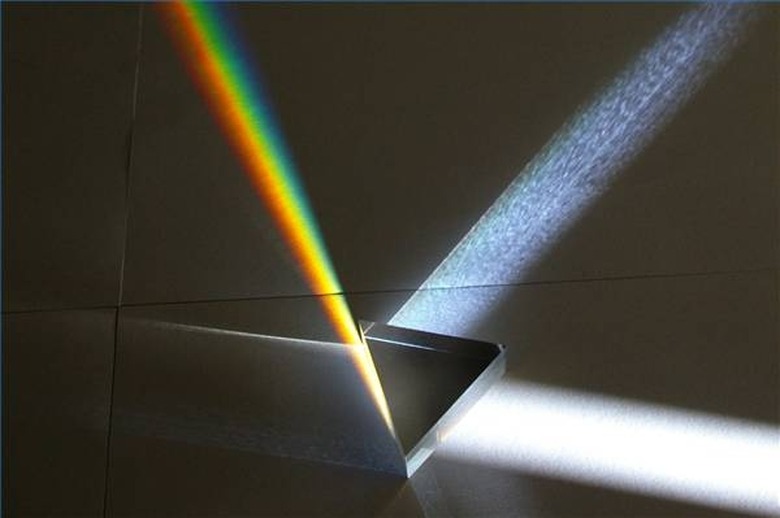How Do Prisms Work
In the 1600s, Isaac Newton did a series of experiments with prisms and light. He showed that prisms not only split light into the familiar rainbow colors, but can also recombine them. The glass of a prism, and the angles of its sides, work together to make a fascinating optical tool.
Effects of Light
Effects of Light
When light passes from the air into glass, it slows down, and when it leaves the glass, it speeds up again. If the light hits the glass at an angle instead of dead-on, it undergoes refraction. The angle at which it hits the glass is not the same as the angle it travels inside the glass. The light is no longer moving in a straight line, but gets bent at the surface. The same thing happens when the light leaves the prism–it bends again.
Snell's Law
Snell's Law
An optical principle called Snell's Law predicts exactly how this happens. Snell's Law deals with the angles that light enters and leaves a prism, and something called the index of refraction. The index of refraction shows how much light slows down when it goes into the glass.
Color Changes
Color Changes
The different colors of light, from red to violet, each get bent at slightly different angles. Red gets bent the least, violet the most. This causes the colors to fan out and become distinct.
Second Prism
Second Prism
The fact that a prism can break light into colors was known before Newton. But Newton asked what would happen if he put a second prism in the location of the colors. If the second prism caught all the colors on one of its surfaces, white light came out of the other side. The same properties that spread the colors apart worked in reverse to reassemble them.
Additional Experiments
Additional Experiments
Newton also asked what would happen if he used a second prism on only one color. Would it break into other colors? His experiment showed that it didn't. The colors coming out of a prism are fundamental.
Reflection
Reflection
In addition to refracting light, prisms are also good for reflecting light. If you look into a prism and turn it in your fingers, you'll see light reflected off the back side at certain angles. This is called internal reflection. Some prisms are designed to have several internal reflecting faces. They can take a telescope image that is upside-down and backwards and flip it back to normal. Reflecting prisms are used in periscopes and binoculars, as they are more durable than mirrors.
Cite This Article
MLA
Papiewski, John. "How Do Prisms Work" sciencing.com, https://www.sciencing.com/prisms-work-4965588/. 24 April 2017.
APA
Papiewski, John. (2017, April 24). How Do Prisms Work. sciencing.com. Retrieved from https://www.sciencing.com/prisms-work-4965588/
Chicago
Papiewski, John. How Do Prisms Work last modified March 24, 2022. https://www.sciencing.com/prisms-work-4965588/
